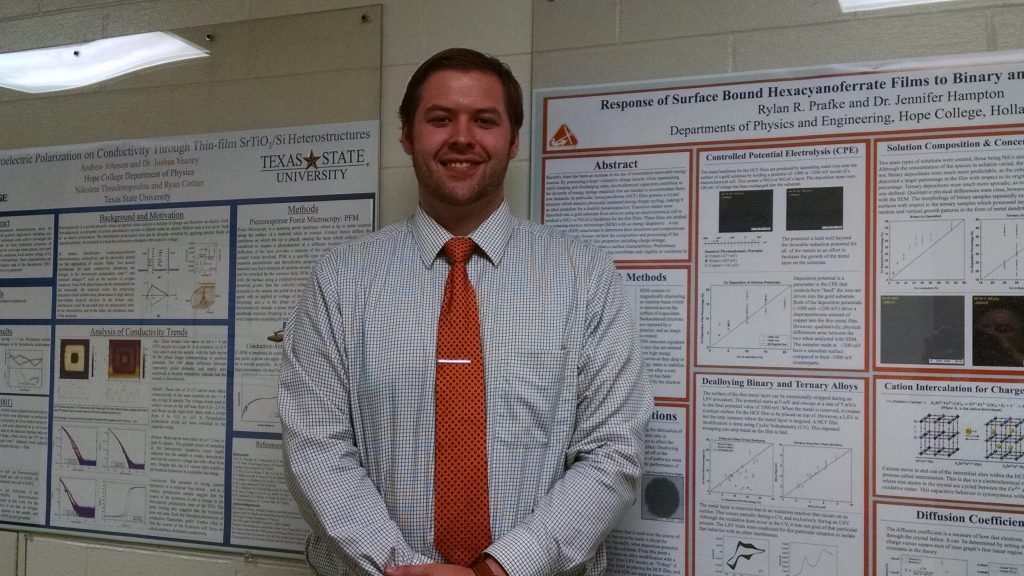 Characterization of Cation Intercalation in Surface Bound Prussian Blue Analogues
Characterization of Cation Intercalation in Surface Bound Prussian Blue Analogues
Research Advisor: Dr. Jennifer Hampton
With the increasing popularity of handheld, rechargeable devices (such as smartphones) the demand for Lithium-ion batteries has also increased to fill this need. Alternative battery types provide an opportunity to lower costs by using more earth abundant elements. Prussian Blue Analogue (PBA) films are one alternative that have the benefit of admitting a more diverse range of ionic intercalants than lithium. This study focuses on the characterization of PBA films which are exposed to a variety of cations (Li+, Na+, K+) that differ from the initial solution in which they were created. We found that some films would exhibit enhanced features, such as, a larger charge capacity. Preliminary results demonstrate that some cation intercalants are more kinetically favorable, and out-compete each other for interstitial site occupation within the PBA lattice. Further research could look to the effect of using 2+ ions (Mg2+ and Ca2+) as the intercalant.
This material is based upon work supported by the Hope College Department of Physics, the Hope College Dean for Natural and Applied Sciences Office, and the National Science Foundation under NSF-MRI Grant No. CHE-0959282.





